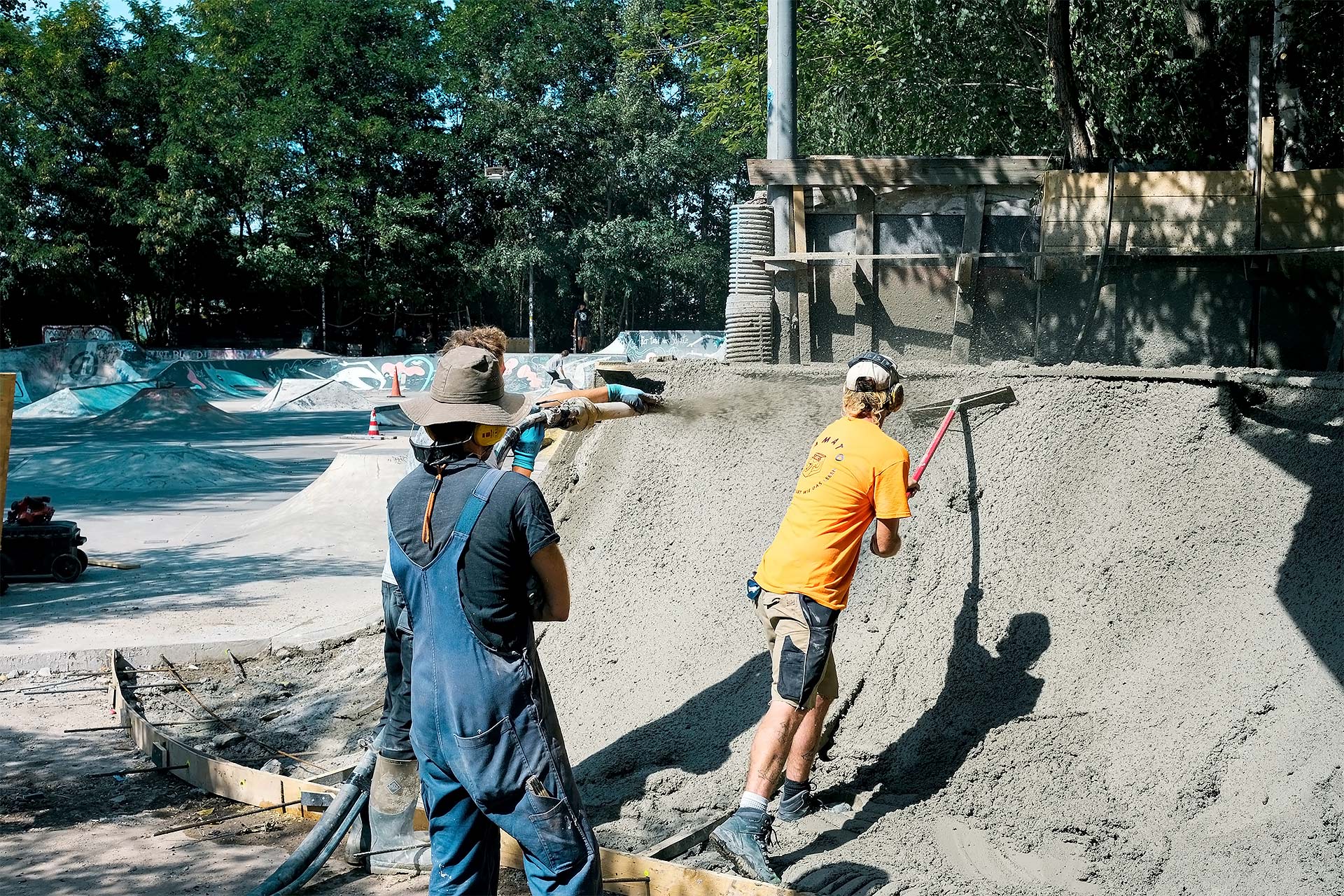Trucks and Fins is a huge present to the whole skate community - not just for the skating people, but also for shops, builders and schools. Super easy to use and can't believe how complete it is.
Pascal Lieleg aka Official Bowlshit
2er DIY Skatepark is one main part our company’s foundation. Yamato Living Ramps evolved from 2er skatepark and Betonhausen DIY in Berlin. 2er started with some really simple ramps more than 15 years ago and is now one of Europe’s largest DIY’s.

Today it’s run by an official non-profit club, 2er skateboarding e.V. The park has been legal for several years, with differing contracts. Recently, the land got sold to the city of Hannover who then offered the e.V. a 50 year lease. This of course was a big push for more building to be done on the park. We’ve established the Builders Jam format in the past to tackle quick development several times now.

Friends and concrete lovers gather from near and far, material, places to crash, food and a ton of drinks are provided, and with a common goal to chase, volunteers are then set free to shape the park. This particular time, Yamato orchestrated a bit more, we tore down a section of the park prior to people arriving, and a rough idea was drafted within the members of the e.V. A big push this time came with the Belgian crew that showed up. It was nice to see the evolution of skills and size of pieces that got tackled.


In the end, 2er now features a radical steep bank / built-in loop section, a steep vert QP, a sick granite lip pocket and a dip / step-up push-bump thingy for a ton of new options in the park.
Personally, I was sceptical about the work load / fun-skatability ratio of the loop thing, but I got proven wrong. Seeing people pump the doorway and the loop in one flow is pretty rad. I can’t wait for the next section to get build, which – so they say - should then be a more streety bit. Time will tell.

Join the Trucks and Fins community and receive exclusive news, giveaways, access to subscribers-only
-contests, discounts from our partners and much more directly from us!

Trucks and Fins is a huge present to the whole skate community - not just for the skating people, but also for shops, builders and schools. Super easy to use and can't believe how complete it is.
Pascal Lieleg aka Official Bowlshit

Trucks and Fins is a great resource for checking on local spots if you are traveling or planning a road trip! A one stop resource that is constantly updated with the newest projects as well as those bucket list locations worldwide. The intuitive UI features gps coordinates as well as useful information about shops nearby.
Architect Betonlandschaften

Trucks and Fins provide a great service. Its quick and easy to use and has such a vast amount of parks included, not just in the UK but worldwide. CANVAS Spaces support the cause and fully back what they are doing.

Our skate community has been crying out for a comprehensive guide to global skate spots. Trucks and Fins should be commended on their dedication to mapping the world's STOKE!
Maverick Skateparks

Trucks and Fins brings all of the world's skateparks to you all in one convenient place through their endless search for parks around the world. They have park locations, details, images, and more to help plan your next skate quest wherever that may take you. We appreciate their dedication and passion for skateboarding and the amazing gifts that skateparks and skate spots are.
Steve Zanco, Skatepark Respect

A big part of skateboarding is about finding Animal Chin - your spirit animal, or in other words: whatever gets you stoked. Could be the right people to roll with, or that special dream terrain. Trucks and Fins has all the best skate destinations in one place; a map of stoke in your hands.
Jan Kliewer, Yamato Living Ramps